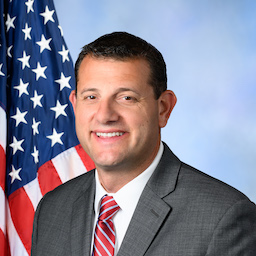- Home
- About
-
Services
- Art Competition
- Community Project Funding Map
- Congressional App Contest
- Congressional Certificate
- Event Request
- Flag Request
- Grants
- Grant Letters of Support
- Help with a Federal Agency
- Inauguration
- Internships
- Kids Page
- Meeting Request
- Service Academy Nominations
- Tour Requests
- Vietnam Veteran Commemoration
- Government Shutdown FAQ
- Issues
- Media
- Contact

In the News
Let's get the resources the Central Valley needs in the Farm BillBakersfield Californian Op-Ed
Washington,
July 16, 2023
Tags:
Agriculture
Right now, one of the biggest items on Congress’ to-do list is the Farm Bill, a package of legislation that governs a wide range of agriculture, forestry and nutrition programs, and is typically reauthorized every five years. Legislation that impacts livelihoods throughout the Valley should not be crafted behind closed doors without your input.
Read the Op-Ed in the Bakersfield Californian Right now, one of the biggest items on Congress’ to-do list is the Farm Bill, a package of legislation that governs a wide range of agriculture, forestry and nutrition programs, and is typically reauthorized every five years. Legislation that impacts livelihoods throughout the Valley should not be crafted behind closed doors without your input. That’s why I was glad to host Chairman of the House Committee on Agriculture Glenn “GT” Thompson, R-Penn., and other bipartisan members of the committee at the World Ag Expo in Tulare for a Farm Bill Listening Session this year. This listening session gave Central Valley producers, growers and food banks a unique opportunity to share their priorities for the Farm Bill with the lawmakers directly responsible for drafting it. This legislation affects every family in our community — so it is important people understand what the bill is and the ways I’m working to ensure the needs of our Central Valley farmers, rural communities and food-insecure families are being met. The first Farm Bill was enacted in 1933 following the first World War and the Great Depression. The goal was to protect the American food supply and keep prices fair for consumers and farmers alike. Ninety years later, the goals of this legislation remain largely the same, and Congress has to reauthorize it this year. The Farm Bill reauthorization is an opportunity for lawmakers to regularly address and update agriculture policy. In California we grow more than 400 different commodities, from tree nuts and table grapes to tomatoes and cotton. Given the vast array of commodities we grow, the issue of crop insurance, especially for our specialty crops, is one of my top priorities for the Farm Bill. A better safety net for our growers means significant improvements to crop insurance to encourage more enrollment and higher levels of coverage. While most orchard crops like trees, bushes and vines have variable crop insurance products, most field-grown specialty crops like berries and vegetables do not. The Farm Bill should encourage the development of new crop insurance products for the parts of the industry that currently have no viable insurance programs. Another one of my top priorities for the Farm Bill is supporting a strong, permanent, robust safety net to support our agriculture industry so they are better prepared for extreme weather events. Between periods of extended drought and extreme flooding — our agricultural producers in the Valley have had a difficult and uncertain couple of years. The drought cost California’s agriculture industry more than $1.1 billion and nearly 7,000 full- and part-time jobs just in 2021 alone — the full losses from the years-long drought are expected to be closer to $3.4 billion. Thousands of acres of agricultural land had to be taken out of production because farmers simply didn’t have a reliable water supply to grow food. But sometimes nature changes course and our farmers are dealt another unpredictable set of circumstances. This year, atmospheric rivers and a lack of water storage infrastructure led to flooding throughout our Central Valley communities. Now thousands of acres of productive farmland remain under water in the Tulare Lake bottom, and the agriculture losses across Kern, Kings and Tulare counties are estimated to be in the hundreds of millions of dollars. Knowing how these weather events impact food prices, local jobs and our food supply chain, I’m working to include provisions in the Farm Bill that make it easier for our local growers to qualify for more disaster relief programs. Just like extreme weather, invasive species pose an existential threat to our ability to grow food for the nation. We should use the Farm Bill to increase investments in agricultural research services to counter the threat of invasive species like the navel orangeworm and the spotted lantern fly. These pests pose a threat to our food security and ability to feed our families. In addition to supporting the agricultural producers in our region, it’s also important that the Farm Bill addresses food insecurity, nutrition and food deserts in the Central Valley. Nearly one out of every four people in the 22nd Congressional District rely on state and federal food assistance, so it is imperative that adequate funding for nutrition programs is achieved in the bill. I’ll also be advocating for the inclusion of greater varieties of fresh produce and the inclusion of frozen food for the Supplemental Nutrition Assistance fresh fruit and vegetable program. We also need to ensure the bill includes support for rural development to ensure small, rural communities throughout the Valley have access to infrastructure, business and community improvement funding. This includes supporting water infrastructure programs and encouraging public-private partnerships for capital investment, and full funding for rural development programs. The Farm Bill has wide-ranging impacts, and we only get the chance to update some of these programs every five years. It’s a top priority of mine to ensure the Central Valley has the resources we need to continue growing the food that feeds the nation and much of the world. And just like the listening session in Tulare, I will keep making sure voices in every corner of our community are heard. |

